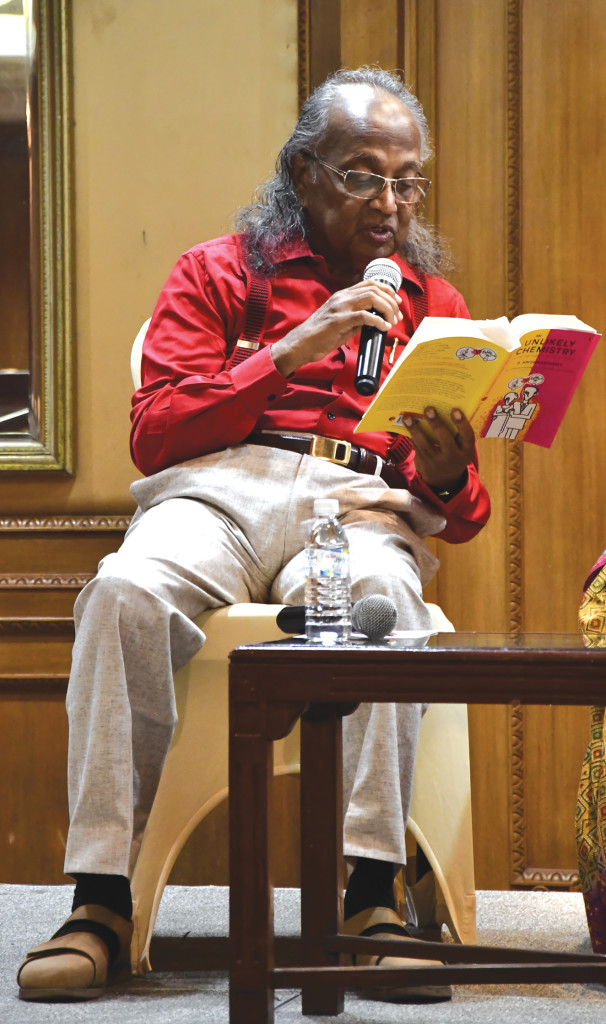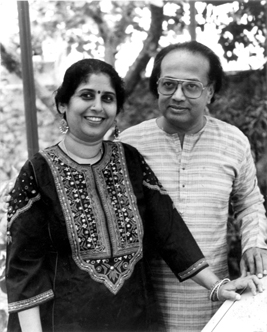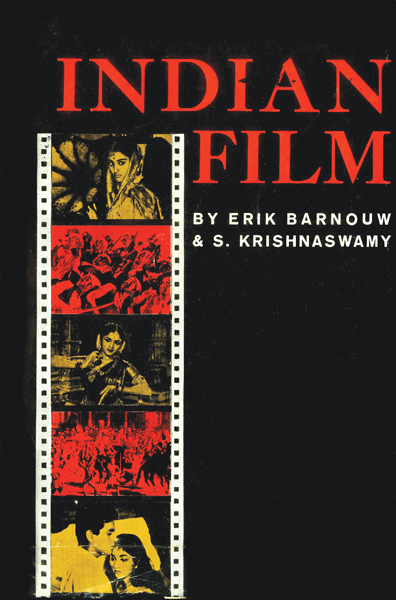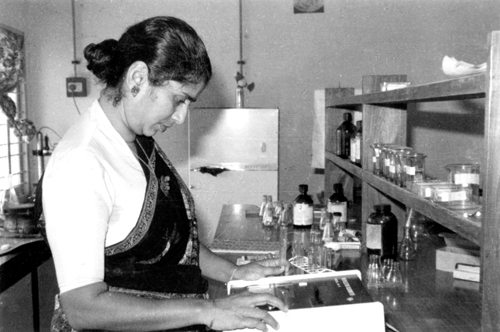Registered with the Registrar of Newspapers for India under R.N.I 53640/91
Vol. XXVIII No. 5, June 16-30, 2018
A biography that became an autobiography
by R.V. Rajan rvrajan42@gmail.com

‘Babu’ reads from the autobiography
An Unlikely Chemistry* by Dr. S. Krishnaswamy, documentary and television film-maker of repute, who hit the headlines in the late 1970s with his four-hour magnum opus Indus Valley to Indira Gandhi, tracing the 5,000 years of history and heritage of India on celluloid, started as the biography of his wife Dr. Mohana Krishnaswamy, but ended up as an autobiography of a couple. It is the story of the unlikely chemistry between a scientist and a film-maker who battle personal issues and external challenges and go on to build a life on their own terms. It is also the story of the trials and tribulations, the joys and sorrows that the couple together faced during 48 years of their marriage.

The Krishnaswamys as they looked forward to life together
The book while detailing the inspiring story of Mohana also “narrates the socio-political events of the last century, a philosophical analysis of the Indian psyche besides an essay on love and relationships”. This anecdote-rich work is the second by krishnaswamy, whose first book, Indian Film, with Erik Barnouw as co-author, was published in 1963 and was considered the first ever authentic record of the history of Indian Cinema.
* * *

The cover of the first edition of the Erik Barnouw-Krishnaswamy book
Creativity and film-making are in the genes of ‘Babu’, as Dr. Krishnaswamy is popularly known among family and friends. He was the seventh child of K. Subramaniam, the legendary film maker and freedom fighter whom many consider the ‘Father of Tamil Cinema’ who produced some path-breaking films in the 1940s, the most famous being Thyagabhoomi – a social drama with a patriotic fervor – which was banned by the then British Government. Babu did an undergraduate degree in Physics in Madras. Even as he was busy in college, he enrolled in a diploma course of the British Institute of Radio Engineers, London. After graduation, his father sent him to the US to do a course in film-making at the RCA Institute in Manhattan.
On his way to the US, Babu stopped at Paris to spend a couple of days with family friend internationally acclaimed economist and educationist, Malcolm Adiseshiah, who was then the Deputy Director General of UNESCO. The Adiseshiahs felt that they should introduce Babu to the West under their parental guidance. On the very first day they gave him a culture shock by taking him to a striptease show in a restaurant. Mrs Elizabeth Adiseshaiah said, “You will be exposed to all this when you are away from home in New York. It is better that you get introduced to it when two guardians are with you.”
At the RCA institute Babu found himself over-qualified and felt that he would not learn anything new. He quit the Institute, getting a full refund of his fee, and got admitted in Columbia University where, apart from the knowledge he gained about films and film making, a meeting with Professor Erik Barnouw, became an important turning point in his life.
* * *
Mohana, born in Ranchi, the tenth and the youngest in the family, was brought up in her birth place and Hyderabad. Studying in a Marwari school, she picked up good knowledge of Hindi, Marathi and conversational Telugu and Urdu. She was also keenly interested in dancing and music, but her dream was to become a doctor or a pure scientist. A brilliant student and a teacher’s pet, Mohana completed her graduation from Osmania University but was not comfortable staying with her elder sister, away from her parents who had gone to Chennai to build a home there. Soon after her twentieth birthday, even while doing her first year in medicine, in a momentary outburst she told her mother, “Either you come back to Hyderabad and take care of me or get me married so that I will find my own security.” An arranged marriage saw her getting married to Babu, ten years elder than her. It was an alliance which would help her realise her dream of becoming a successful scientist. However, due to forces beyond her control, she had to give up on her original dreams and instead join her husband in building ‘Krishnaswamy Associates’, a film production company which he had started after returning from the US.
* * *
Erik Barnouw not only helped Babu in joining Columbia University for his Master’s degree but also inspired Babu to undertake two major projects, which would catapult him into a writer and a film-maker deserving international recognition. A term paper titled ‘Is American Media Free?’, which he had presented at the University, earned the respect of the academics. One of them said, “It is remarkable that a foreign student from a different cultural background is able to assess our media culture so accurately within a short span of time.” This helped Babu in getting recruited by the New York State Education Department as a trainee in Educational Television Production. He became a ‘Production Associate’ of a weekly, 26-episodes serial titled ‘World Neighbors’. This experience of working on a programme to instill in American students knowledge of world history and civilisations, art, culture, economics, political systems and society as a whole, in different countries of the world, would pave the way for Babu to later conceive a mega project on similar lines about Indian history. In fact an incident during this phase of his life was to inspire him to take the idea forward.

Mohana – the research scientist.
During a film screening open to all students of the University, Babu saw a documentary on India produced sometime in the 1940s as part of the ‘March of Time’ series by Time magazine. According to Babu, “It was a disgusting, distasteful and distorted portrait of India and it angered me. On the spur of the moment, I went up to the dais and declared my criticism. Professor Erik Barnouw, who was in the audience took the mike from me and said “This film would serve its purpose if only your anger motivates you to make a proper, well-informed, balanced film on Indian history and culture.” ”
The challenge remained with Babu for 16 years, until he completed Indus valley to Indira Gandhi, in 1976. And what a challenge it was!
While still in the University, Barnouw, who already had several books to his credit, casually informed Babu that he was going on a year-long sabbatical leave and was wondering if he could visit India and work on a book on Indian Cinema. When Babu offered his help to the professor after he returned to India, Barnouw responded spontaneously, “Excellent! It is not a question of your helping. We will be co-authors.” Babu was thrilled beyond words when subsequently he heard that Barnouw had a got a Fulbright Scholarship to write the book and Columbia University had agreed to publish it.
* * *
After marriage, Mohana was encouraged to continue her studies by Babu’s family. Since she had finished her first-year study in a medical college in Hyderabad, technically it was possible for her to get a transfer to another medical college in India because of her exemplary academic record. However, the reservation policy of the government would give her the first taste of politics in her attempt to get a transfer to the Madras Medical College. ‘The reverse discrimination’ against Brahmins, ensured that she would not be able to continue her medical studies. Babu suggested that she join Madras University to continue her Master’s degree in biochemistry and eventually pursue a career in research. Even here she had to face caste prejudices, as it had vitiated the entire atmosphere of Tamil Nadu. Thanks to her academic record, Mohana got a Council of Scientific and Industrial Research fellowship for pursuing her Master’s degree and later her doctorate. In 1977. Mohana got her Ph.D from Madras University, but when she applied for a position of a research scientist at the Central Leather Research Institute (CLRI) in Chennai, she found her being a Brahmin again coming in the way. Though she had done well in the interview, one of the panel members told her straight to her face, “It is unlikely that a Brahmin can get involved in leather technology, since it means dealing with leather derived from dead animals and a Brahmin woman is unlikely to feel comfortable.” In spite of Mohana telling the panel that she had been a medical student and had even dissected cadavers, she was not considered for the post. Even the IIT, Chennai, rejected her application, this time because she came from a well-to-do family. She was told by a panel member, “You richly deserve to continue your research in this institute. But you see, I have to be considerate to people from poorer sections of society…. The fellowship money which the IIT can give you will be peanuts for you. So you will understand, if I give this position to someone who is in need of the money to support his family.”
After a few other offers and rejections Mohana decided to accept the position of a pool officer at the Council of Scientific and Industrial research (CSIR) attached to the Captain Srinivasamurthy Drug Research Institute in Madras (CSMDRI) – a unit of Central Council for Research in Ayurveda and Siddha (CCRAS) at New Delhi. Here, she eventually became a research scientist researching a potential drug to fight cancer based on herbal materials described in Ayurveda. She was also involved in attempts to develop a birth control drug.
Within a few years of her work on anti-cancer drugs based on Ayurveda, she received the coveted “Hari Om Asram Gold Medal” from the Ayurveda University in Jamnagar, Gujarat. In 1983, Mohana received an invitation from the Institute of Medicinal Plant Development (IMPLAD) in Beijing, China. While she was delighted in receiving the recognition for her work, some officers of the CCRAS were unhappy and envious of the Chinese invitation for Mohana and her visit to that country. Internally, in the institute the atmosphere was becoming more and more vitiated. Mohana had again reached a crossroads.
(To be concluded)


Great to read this : though I have met dr krishnaswamy and Mohana , at Tag centre. Padma seshadri school and other places , got to read this in California where I am now in ( full bright ) weather now !
Very interesting to go through the details of life in various stages !